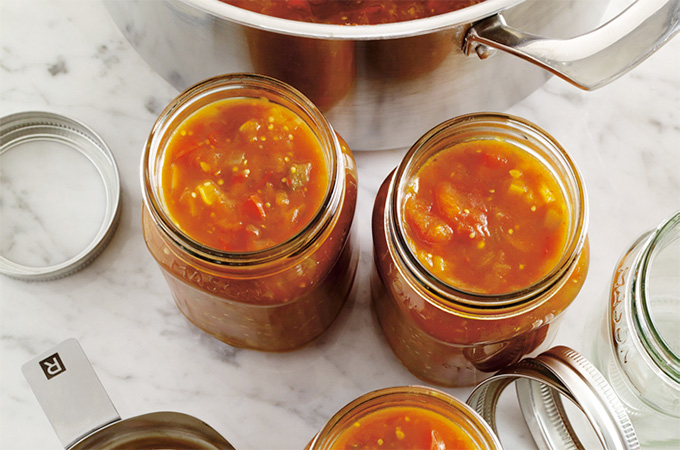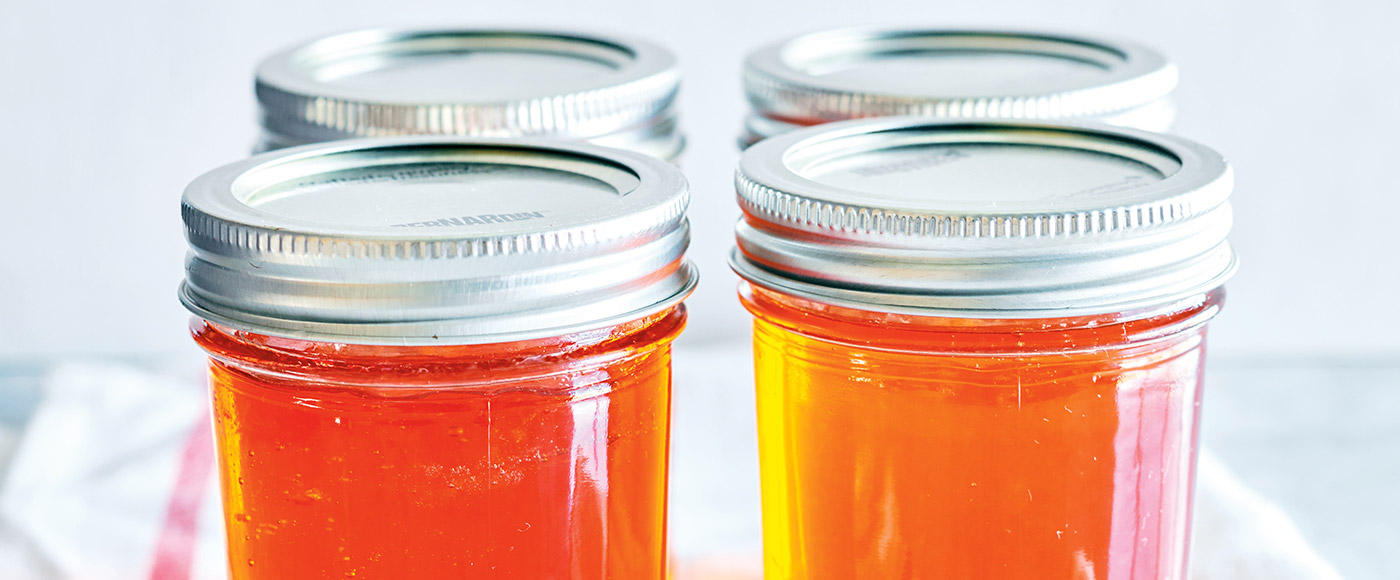I’ve heard about glass jars exploding. How can I prevent this?
Wide differences in temperature can cause thermal shock to occur, which can result in jars breaking. Never fill a cold jar with a boiling recipe, or place a hot jar on a cold counter! Heating jars in the oven can also cause them to break. Using a rack is also recommended to prevent jars from smashing against the bottom of the pot during the heating process.
Can the oven replace a pressure canner to sterilize low-acid foods?
No. To destroy spores that cause botulism, the internal temperature of the food must reach 240°F (116°C). Under normal conditions, no matter what temperature your oven is set to, the temperature of the food and liquid inside the jar will never exceed 212°F (100°C). To hit the 240°F (116°C) mark, a pressure canner is the only way to go.
How can I safely preserve meat sauce?
The only proven safe method is using a pressure canner. The addition of meat (whose pH is higher than 6) to tomato yields an overall pH level that’s definitely higher than 4.6, the level at which dangerous botulinum spores could develop.
Can I skip the heat treatment step after filling my jars?
Some do, but it’s not recommended. If you pour warm food into a clean sterilized jar and close it quickly, the seal that forms may not be airtight—even if you hear the pop. What’s more, there’s no way to guarantee that spoilage-causing micro-organisms did not contaminate the recipe during the filling step. Why risk it?
Although cases of food poisoning caused by homemade canned food are rare, they can occur if proper canning techniques are not followed. The worst-case scenario is botulism, a very serious type of food poisoning. The bacterium that causes botulism can be found just about anywhere in nature in the form of harmless spores. However, under certain conditions, the spores can develop into dangerous bacteria.
This happens specifically in low-acid foods (pH > 4.6) stored in airtight containers (without oxygen) at room temperature. In other words: It could happen in improperly canned low-acid food! Unlike bacteria, yeast or mould, spores are resistant to boiling water (212°F/100°C). To destroy them, a higher temperature of 240°F (116°C)—that can only be achieved in a pressure canner—is required. This is why homemade canned foods that are low in acid must be sterilized in a pressure canner.
The good news? Naturally acidic foods (like fruits and jams) or recipes where vinegar, lime or lemon juice have been added (ketchups, salsas, pickles) are no-risk as spores will not develop in an acidic environment. So canning salsa, for example, in a boiling water bath is perfectly safe.
What do I do if the lid didn’t “pop”?
Twenty-four hours have elapsed and the lid still springs up and down when pressed in the middle? It’s not properly sealed. Place the jar in the fridge and consume within the next few days, store it in the freezer (if appropriate) or start the fill/heat-processing steps over again with a new lid. It’s important to note that a second heat-processing can affect quality, especially with pressure-treated recipes.
Can jars be washed in the dishwasher?
Yes. Cut down on time by using the dishwasher to clean your jars and keep them warm before filling. But a dishwasher cannot be used to perform the final heat-processing step after filling: You really need to use either a boiling-water bath or a pressure canner.
Is it possible to reduce the amount of sugar in fruit preserves?
Absolutely! And fruit can easily be canned in water without a problem—the amount of sugar is entirely at your discretion. The final heat-processing step destroys micro-organisms in the preserves and keeps them safe as long as the jar is sealed. However, it’s important to remember that a low-sugar preserve won’t keep for very long once opened (mould can appear as soon as two weeks in) because sugar is what stops the development of contaminating micro-organisms.
Can a pressure canner be used on a glass/ceramic cooktop?
Some pressure canner manufacturers warn against it, so check the box or instruction manual to be sure. Because these types of cooktops take time to heat up and cool down, maintaining the required pressure could prove difficult.
What is the difference between regular and pickling salt?
Pickling salt (also called canning or preserving salt) is 100% pure. Unlike table salt, it contains no iodine or other additives that could discolour foods or make the brine cloudy.



